History of the Tiki Gods
by William Murphy
Most often when we hear the word “Tiki” we think of carved wooden and stone statues with piercing eyes and a menacing scowl.
Some of these statues seem to express great joy or spiritual balance, while others may look more worried or even sad, and some even look downright sinister…
| TIKI Brand 25 Inch Stainless Steel Low Smoke Fire Pit |
|---|
| Yiosax Solar-Powered Tiki Statue |
| TIKI Brand 65-Inch Cabos Bronze Metal Torch |
What many people don’t know is that these statues actually represent the many Tiki gods in Hawaiian and Polynesian mythology.
The original Tiki statues were carved by skilled artisans in the Maori tribe, which inhabited the islands until the early 1800s.
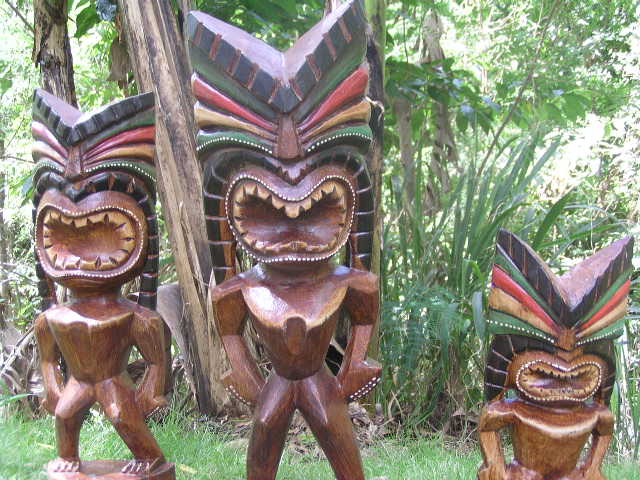
The statues have a distinct look that relates to the symbolic meaning and mythological importance of a particular deity.
There are four major Hawaiian Tiki Gods, Ku the God of War, Lono the God of Fertility and Peace, Kane the God of Light and Life, and Kanaloa the God of the Ocean.
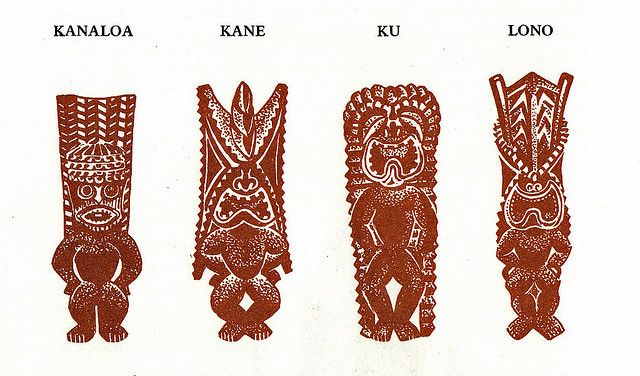
Ancient followers worshiped these Gods through prayer, chanting, surfing, lava sledding and even human sacrifice.
Ku – The God of War
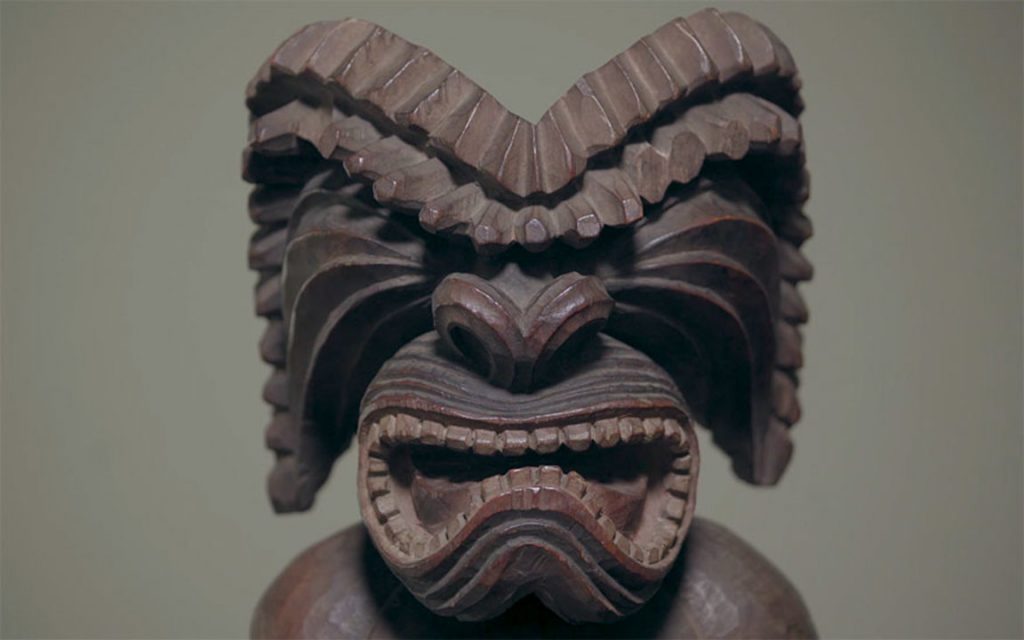
Ku is one of the four great gods along with the ancient tiki gods, Kanaloa, Kane, and Lono. He is worshiped under several different names, including Kū-ka-ili-moku (the “Seizer of Land”).
Ku was the husband of the goddess Hina. He is the god God of Strength, War and Healing. As such, he was known to be a very fierce god. He is also the only god that required human sacrifices. Humans were killed on his altar as a gift to him.
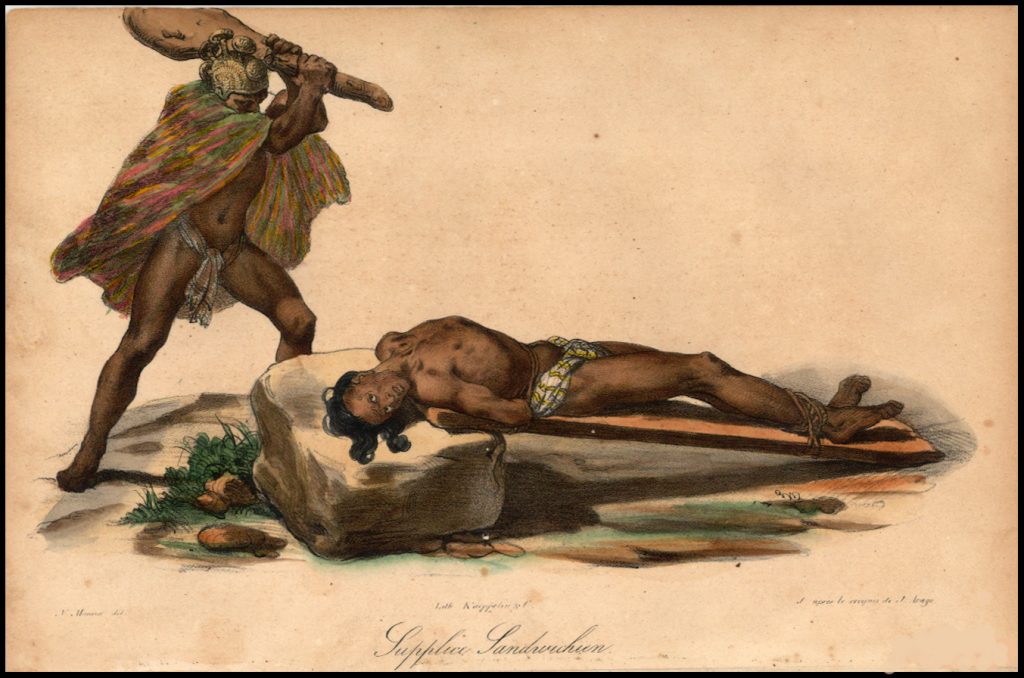
In the animal world Ku is believed to embody the forms of shark, man, hawk, dog, chicken, and red fish.
Ku was the guardian of Kamehameha I, who unified the Hawaiian archipelago under one ruler and established the Hawaiian kingdom. Kamehameha I built several monuments dedicated to Ku at Hōlualoa Bay royal complex as well aa his residence at Kamakahonu.
Here you can find more about Ku:
Lono – The God of Fertility and Peace
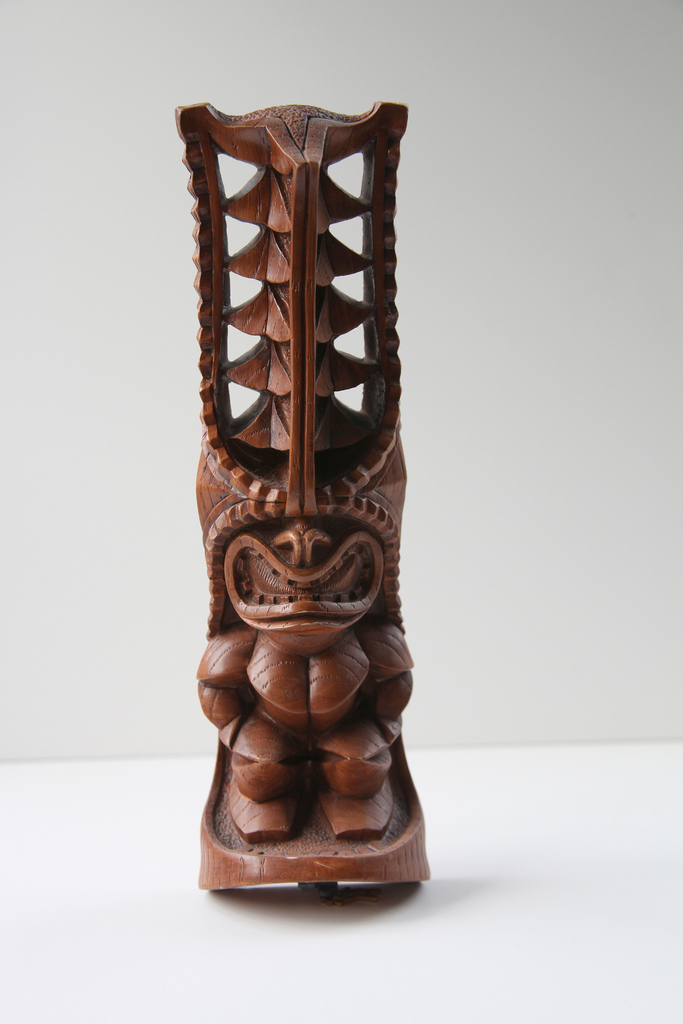
Lono is the Hawaiian god of cultivated, agrarian foods, especially the kumara or sweet potato. He brings Sun, wind, and rain to make the land fertile again. As such, he was sometimes referred to as Lono-makua (Lono the Provider). He is also known as the god of peace.
Lono was one of the four gods (with Ku, Kane, and Kanaloa) who existed before the world was created.
Lono rules over four months of the year, which means four months of the year that Ku doesn’t rule. During Lono’s time, all unnecessary work and war is forbidden. It’s a time of feasting, dancing, and games that are played during the peaceful period. These traditional games are supposed to strengthen people’s skills and muscles for battle.
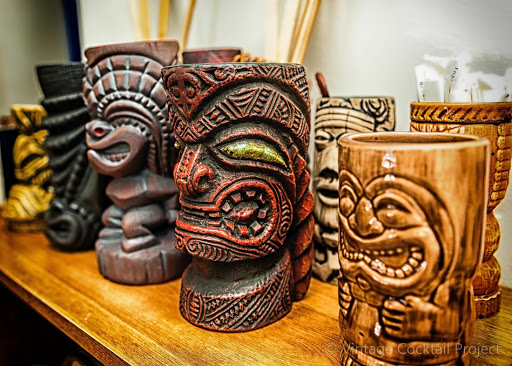
In peacetime, the priests of Lono would walk around the island with their white kapa and announce that it was peacetime. In his honor, the great annual festival of the Makahiki was held.
Many different kinds of plants and animals are said to be forms of Lono. There are also many signs upon nature that are signs of Lono including, dark rain clouds, thunder, rainbows, whirlwinds, and waterspouts.
When the famous British explorer Captain James Cook arrived in Hawaii during the Makahiki festival of peace., many Hawaiians believed him to be the god Lono returned to their island for a second time, which had been prophesized. Cook was therefore treated as a god for his stay.
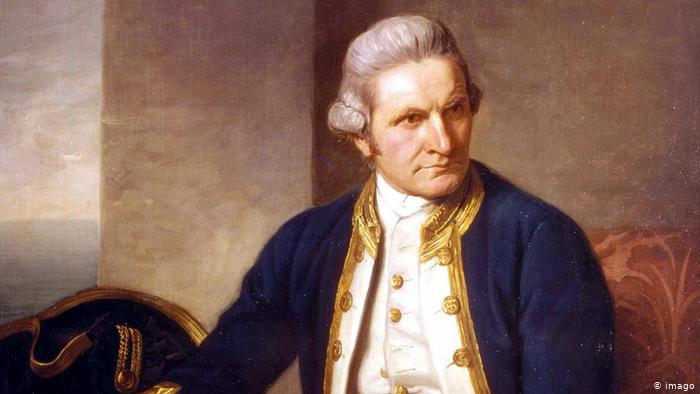
However, when Cook returned to to Hawaii on another voyage in 1779, he was no longer believed to be Lono, since Lono wasn’t supposed to return anymore. It is believed that this caused tensions to grew between the Hawaiians and the British, resulting in Cook’s death.
You might see the statue of Kane at your local Tiki bar as he is believed to bring good luck and prosperity.
Kane – The God of Light and Life
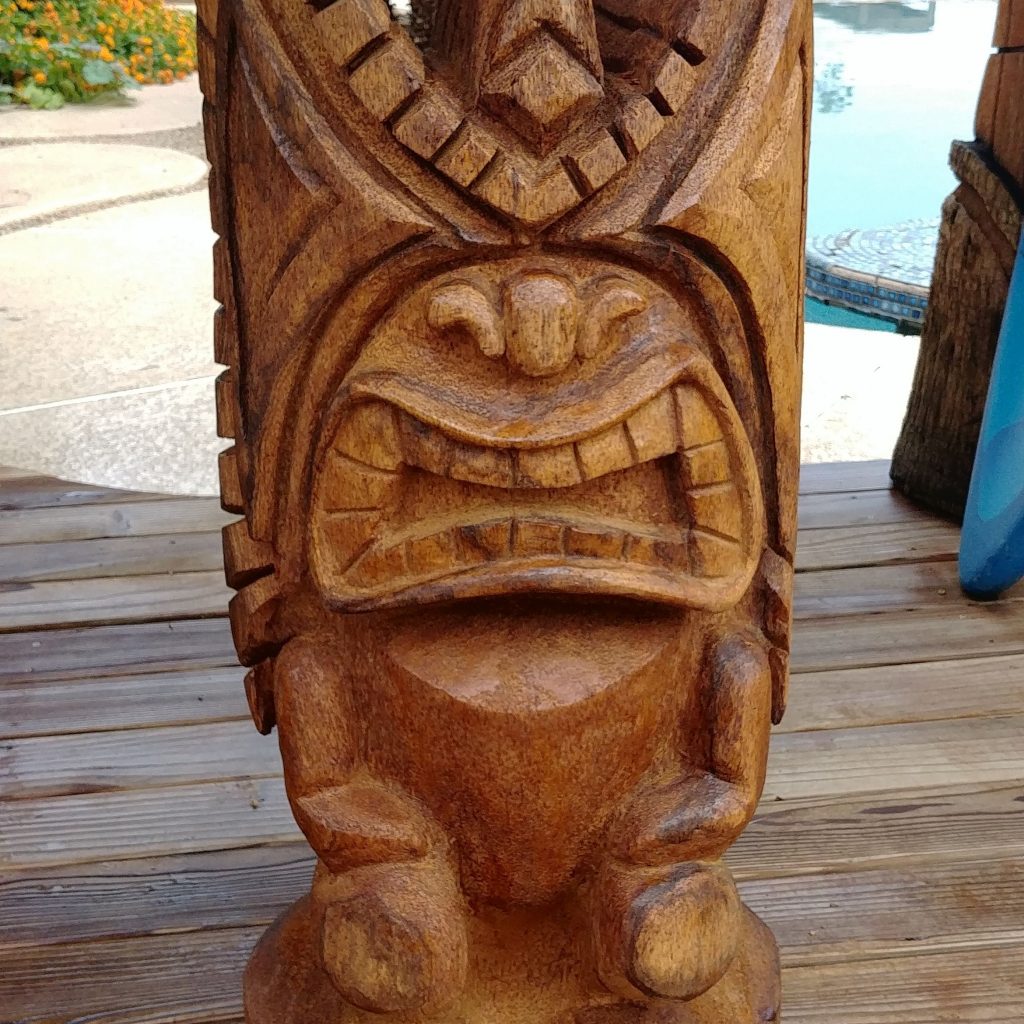
Kane is the Hawaiian god of Light and Life. He was worshipped as ancestor of chiefs and commoners. Kane is the creator and gives life associated with dawn, sun and sky.
He is the father of several Hawaiian goddesses including Pele, whom he banished from the heavens. When creating human beings with his brothers, Kane was responsible for giving them life. As he was the father of all living things, he was a symbol of life in nature.
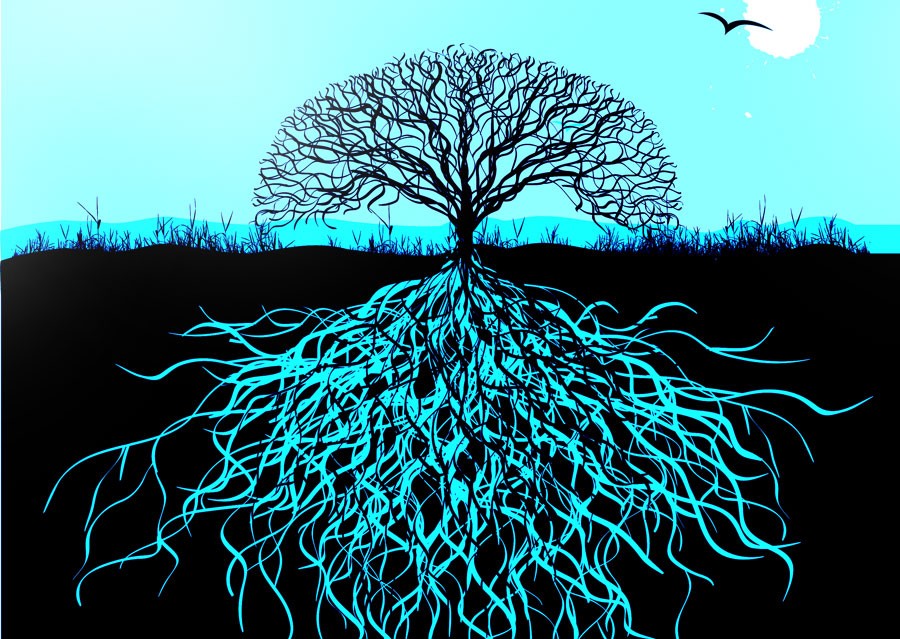
Kane’s home is called Hunamoku, a heavenly paradise thought to be home to all the gods, and good souls would travel there after death.
No human sacrifice or laborious ritual was needed in the worship of Kane.
Kanaloa – The God of the Ocean
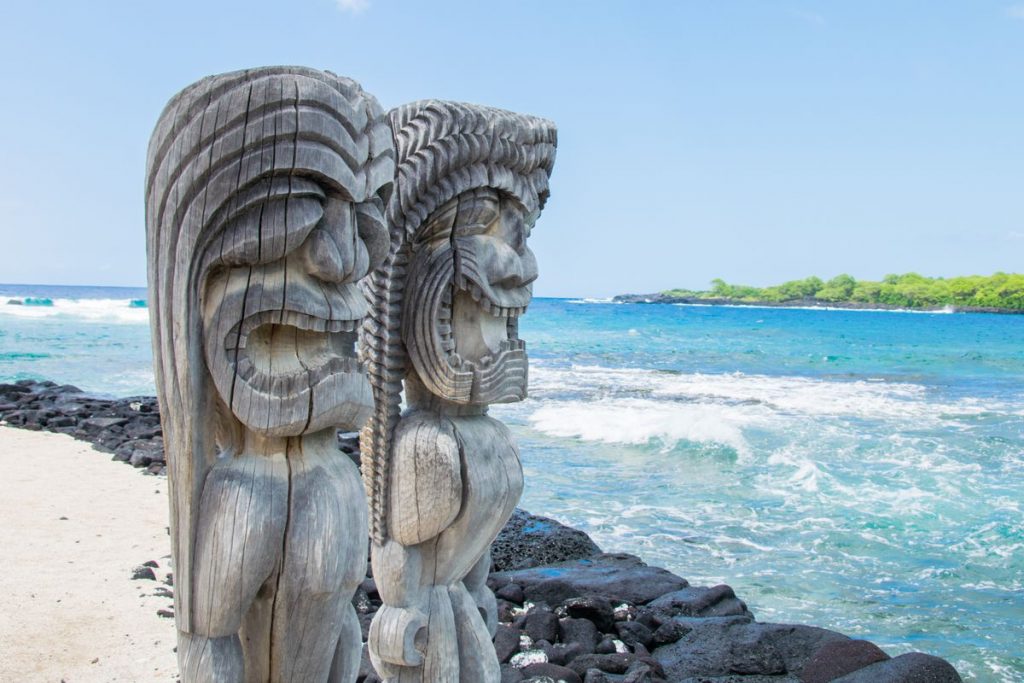
Kanaloa is the Hawaiian god of the ocean, associated with long-distance voyaging, and healing. Compared to Kane, Lono and Ku, not much information about him is known.
Hawaiian traditions often describe Kanaloa as a Kane’s traveling partner, describing them as complementary powers. Kanaloa is said to be tall with a fair-skinned complexion. Kane is darker, with curly hair and thick lips.
These two gods are well known for establishing sources of water. The legend says Kanaloa would point out the source, and Kane would bring forth the water. Kane and Kanaloa are also known as growers of maiʻa.
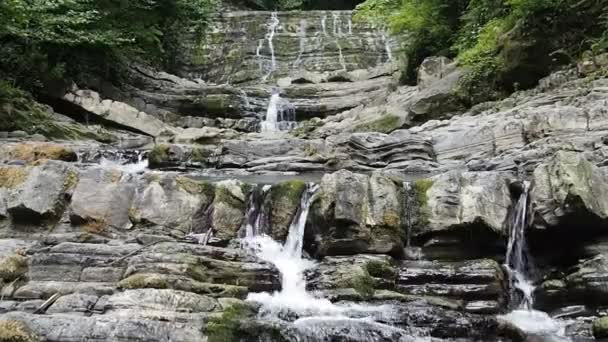
According to a Kauai tradition, if you could look into the eye of Kanaloa you would see the symbol of Pono (goodness) and be healed. One of his is the octopus, which was believed to make sickness flee.
Today, many modern Tiki restaurants and Tiki bars are reviving Tiki culture; they display tiki statues, flaming tiki torches, rattan furniture, tropical-print fabrics and wooden or bamboo items.
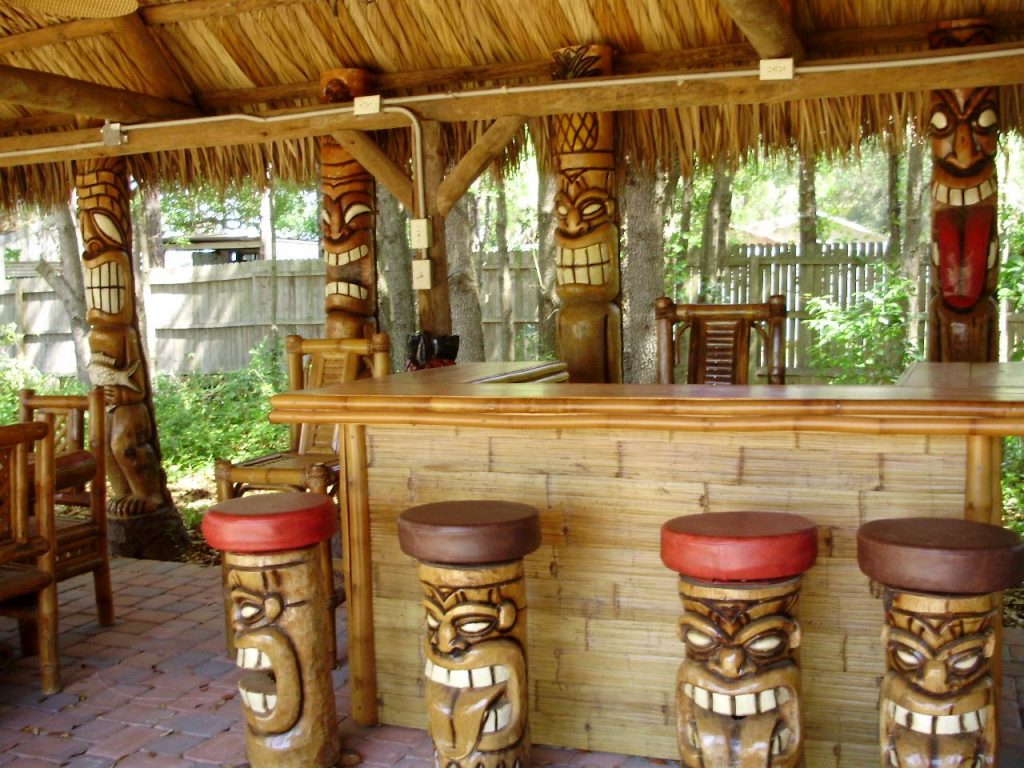
So, next time you are at your local tiki bar and you see some tiki statues, remember how these statues once represented the beloved and revered Tiki gods.
Thanks for reading! Feel free to comment below.
Related posts:
- Outdoor Tiki Huts and Bars – A Basic Overview
- Best Floating Tiki Hut Boat Cruises in the USA
- Best Wood to Use for Building a Tiki Hut
- Who Makes The Best Tiki Bar Stools in The USA?
 |
 |
 |
 |

About William Murphy
William has worked as a general contractor in the city of Fremont, CA for over three decades. During that time, he's written articles about architecture, construction, and environmental protection for various publications. He is an expert on green building and sustainable design. When he's not writing or working, William enjoys spending time with his wife and two children.
Thoughts on "History of the Tiki Gods"
 |
 |
 |
 |
Backyard Stuff
You can Get FREE Gifts. Receive Free Backyard Items here. Disable Ad Blocker to get them all now!
Once done, hit anything below
 |
 |
 |
 |


